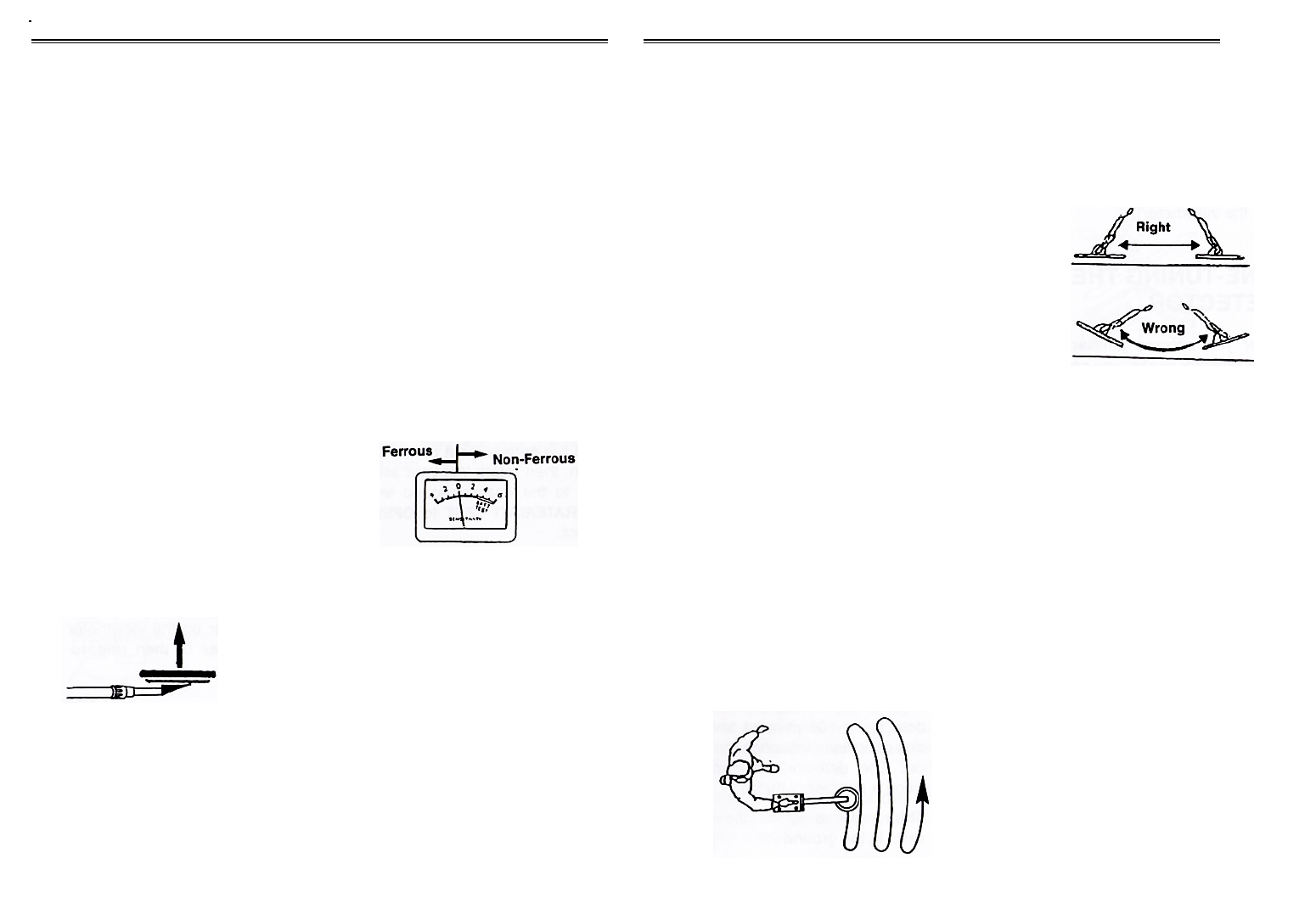
cC
TESTING AND USING THE
DETECTOR
To learn how the detector reacts to different
metals, you should test it before you use it the
first time. You can test the detector indoors of
outdoors.
Indoor Testing
1. Remove any watches, rings, or other metal
jewelry you are wearing, then place the
detector on a wooden or plastic table.
2. Adjust the search coil’s angle so the flat part
faces the ceiling.
Note: Never test the detector on a floor
inside a building. Most buildings have metal
of some kind in the floor, which might
interfere with the objects you are testing or
mask the signal completely.
3. Rotate VOLUME to the 11 o’clock position.
4. Set DISCRIMINATION to its midpoint.
5. Move a sample of the material you want the
detector to find (such as a gold ring or a
coin) about 2 inches above the search coil.
Notes:
z The search coil will not detect without
motion. You must move the object since
you are not sweeping with the detector at
this time.
z If you are suing a coin, the detects it more
easily if you hold it so a flat side is
parallel with the flat side of the search
coil (not the edge).
If the detector detects the material, it sounds a
tone and the pointer moves to the left (ferrous)
or to the right (non-ferrous) while the detector
determines the type of meal it is detecting.
If the detector does not detect the material,
check the battery power and verify that the
search coil is properly connected. Also, you
might need to fine-tune the detector (see
“Fine-Tuning the Detector” on Page 10).
Outdoor Testing and Use
1. Find an area on the ground outside where
there is no metal.
2. Place a sample of the material you want
the detector to find (such as a gold ring or
a coin) on the ground. (If you are using
valuable metal such as gold to test the
detector, mark the area where you placed
the item, to help you find it later. Do not
place it in tall grass or weeds.)
3. Rotate VOLUME about two-thirds
clockwise.
4. Press and release the red button on the
handle. Slowly rotate TUNE until the
pointer is at or near 0. You should barely
hear a tone.
5. While holding the search coil level and
about 1-2 inches above the ground, slowly
move the search coil over the area where
you placed the sample, sweeping the
search coil in a side-to-side motion.
Search Coil Sweeping Hints:
z Never sweep the search coil as if it were a
pendulum. Raising the search coil while sweeping
or at the end of a sweep causes false readings.
z Sweep slowly – hurrying makes you miss targets.
If the detector detects the material, it sounds a tone
and the pointer moves to the type of metal it found.
If the detector does not detect the material, make sure
you are moving the search coil correctly.
Notes:
z The detector responds with a strong signal
when it detects most valuable metal objects.
If a signal does not repeat after you sweep
the search coil over the target a few times,
the target is probably junk metal.
z False signals can be caused by trashy
ground, electrical interference, or large
irregular pieces of junk metal. False signals
are usually broken or non-repeatable.








